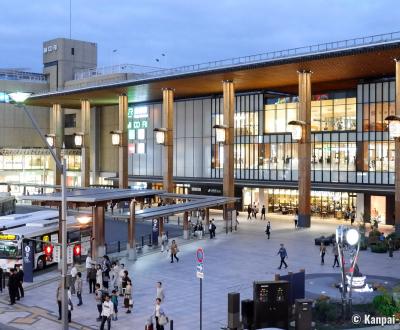Nagano
The Highest Prefectural Capital in Japan
Nagano is the capital of the eponymous prefecture located in the north of the Japanese Alps, in Chubu area, in the center of Japan’s main island Honshu. The city, where less than 400,000 inhabitants live, is surrounded by mountains and renowned for its ski area.
Nagano earned international fame as the 1998 Winter Olympic Games 🏅 host city. The Games benefited from its convenient location, at the heart of 3,000 meters high mountains between Joshin Etsukogen National Park and Myoko-Togakushi Renzan National Park.
One of the first Buddhist temple in Japan
At its origins in the 18th century, Nagano was a small village built around its main Buddhist temple: Zenko-ji. This temple, founded in the 7th century, is said to shelter the first Buddhist statue imported in Japan. Many of its building are listed as National Treasures of Japan and the temple is still popular among Japanese people who come in number to visit it.
Zenko-ji temple is the city’s center most attractive place, and its visit is pleasantly complemented by:
- Zenko-ji Omotesando, a long paved avenue bordered by traditional looking buildings, home to various cafés and shops. This walk of more than one kilometer long is the main access to the temple and is embellished by a light up in November and December evenings.
- Joyama Park, nearby, reminds of a small Ueno Park, with its zoo and the contemporary architecture of Shinano Art Museum, dedicated to Japanese contemporary paintings.
Wilderness at the city’s doorstep
To the north-west of Nagano, at about one hour drive, enchanting excursions await in Mount Togakushi, especially in autumn 🍁:
- The 2,000 years old vast Shinto complex Togakushi-jinja, built to worship Japanese mythology goddess Amaterasu. It is constituted of five shrines scattered in the forest mountain, and separated by an average distance of 2km from each other. The place is also favored for the Shugendo ascetic practice.
- Lake Kagami-ike, the "mirror pond," whose name is derived from the perfect reflection of the mountains on its waters on a calm weather day. This small body of water offers a short hike at the foot of Mount Togakushi.
- In the same area, a ninja-themed museum (Togakushi Ninja Museum) and few attractions (Ninja Karakuri Yashiki and Chibikko Ninja Mura for children) add a fun note to the trip (closed in winter).
The area is famous for its production of fruits, but more importantly for buckwheat. It is therefore easy to find many restaurants serving soba buckwheat noodles, the local specialty. The other local dish made from buckwheat is oyaki, a kind of dumpling filled with vegetables and soy.
Aside Matsushiro Castle 🏯 in the south of the city, Nagano does not have other great touristic interests. However, it can be a nice and convenient stopover for travelers to the north-west, where Kanazawa or Takayama await for discovery.
Nagano is also composer Joe Hisaishi’s hometown.

